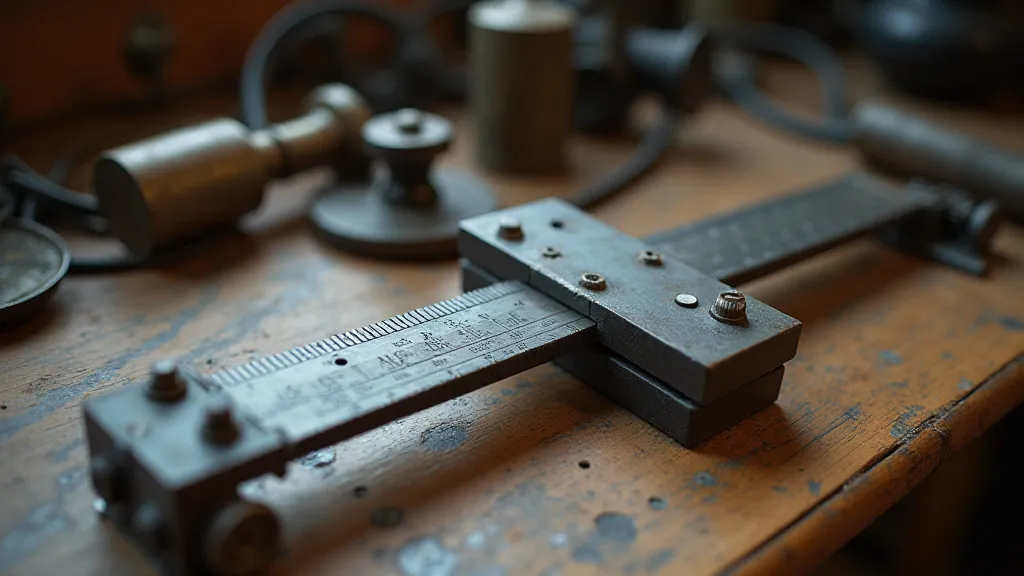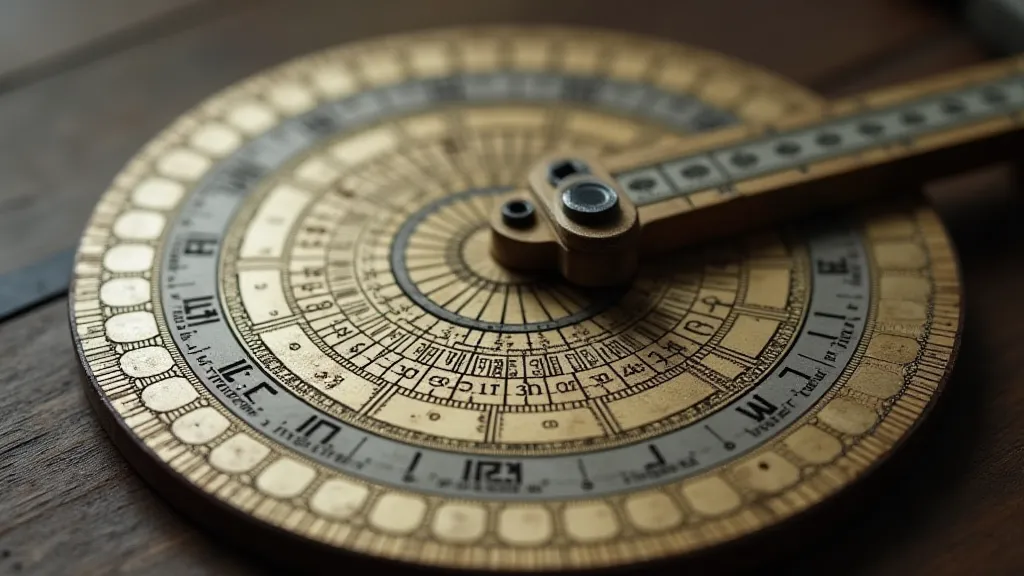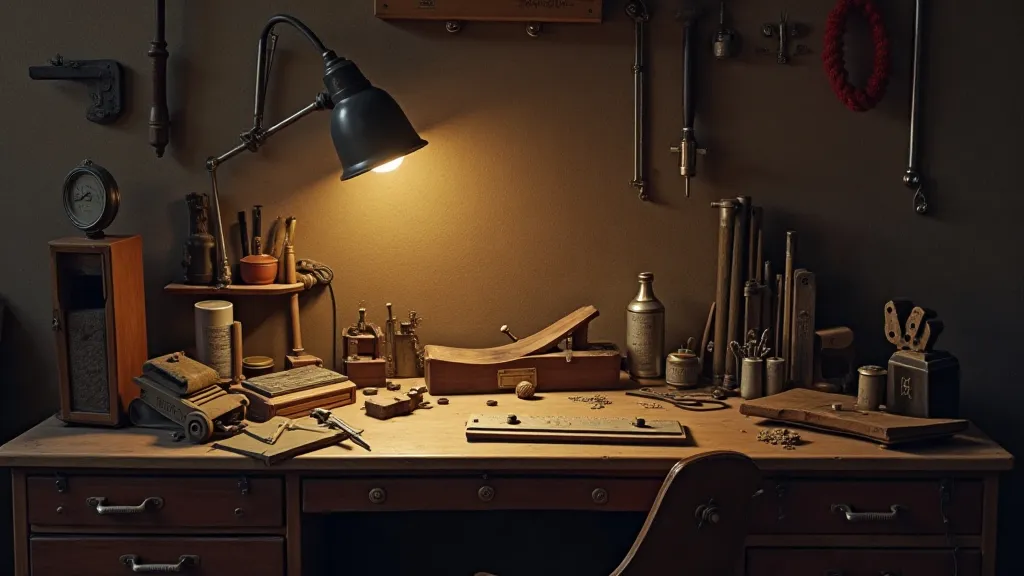Ephemeral Equations: The Slide Rule and the Art of Approximation
There’s a certain melancholy associated with antique tools. It's not merely the patina of age, the faint scent of oil and history clinging to the brass and ivory. It’s a recognition of a vanished world – a world where ingenuity wasn’t about chasing ever-increasing precision, but about understanding the elegance of approximation. And few tools embody that ethos as beautifully as the slide rule.
I remember the first time I held a slide rule. It wasn's mine, of course. It belonged to my grandfather, a civil engineer who built bridges and dams across the American Midwest. It was a Pickett Model N3, a sturdy, almost military-grade instrument, clearly well-loved and relentlessly used. He’s gone now, but the slide rule remains, a tangible link to a man who built a career, and an entire life, with its help. The feeling of the cool, smooth mahogany in my hand, the faint clicks of the scales as I tentatively moved the cursor, the almost sacred feeling of responsibility that came with holding such a significant tool...it was profound.
Today, we have calculators that can calculate to a thousand decimal places in the blink of an eye. They’re ubiquitous, embedded in our phones, our computers, practically everything we touch. But the slide rule wasn't just about calculating. It was about

The Dawn of Mechanical Calculation
The history of the slide rule stretches back centuries, though its recognizable form emerged in the 17th century. Early iterations were essentially straight edges used to compare scales, but the concept evolved rapidly. William Oughtred is often credited with inventing the slide rule as we know it in 1622, though his initial design incorporated a third runner that later disappeared. The true flowering of the slide rule’s popularity coincided with the Industrial Revolution and the subsequent explosion in engineering and scientific endeavors. Suddenly, complex calculations were essential for everything from designing steam engines to laying out railway lines. The precision required often meant painstaking effort, and in some cases, a degree of specialized knowledge required skills that went beyond simple arithmetic—knowledge that would eventually be codified and disseminated via tools like the slide rule.
The slide rule wasn’t simply a shortcut; it was a training ground. Students learning engineering and physics were required to use slide rules. It instilled a fundamental understanding of logarithms, exponential functions, and the relationships between different mathematical operations. A student proficient with a slide rule possessed a depth of mathematical intuition rarely seen in today's calculator-dependent world. There was a grace to the process – a certain satisfaction in manipulating the scales to arrive at a solution, even if it wasn't perfectly precise. This dedication to spatial understanding and practical application is a theme explored in more detail in The Cartographer's Tool: How Slide Rules Shaped Mapping and Surveying, revealing the broader impact of these instruments beyond the purely numerical.
The Craftsmanship: More Than Just a Tool
The slide rule wasn’t just a utilitarian object; it was a testament to craftsmanship. The mahogany bodies, often meticulously hand-carved, felt solid and reassuring. The scales, printed with incredible precision, were a marvel of early photolithography. The cursors, often made of delicate metal and inlaid with jewels for readability, were works of art in themselves. Companies like Pickett, Eberhard, and Keuffel & Esser competed fiercely to produce the most accurate, durable, and aesthetically pleasing instruments.
Consider the meticulous process of creating the scales. They weren't simply printed; they were etched onto a glass master, then transferred to the mahogany body using a complex series of steps involving dyes, solvents, and protective coatings. The accuracy was paramount. Even a tiny misalignment could render the slide rule useless. The level of detail and the sheer amount of labor involved in producing each slide rule is astounding when you consider the relatively low cost of the instruments at the time. They were designed to last, to be passed down through generations, sometimes requiring careful restoration to maintain their functionality and beauty. Those involved in the process frequently demonstrated a spatial reasoning ability crucial for layout and design—a concept further elaborated on in The Cartographer's Compass: Slide Rules and the Pursuit of Spatial Understanding.

Embracing Imperfection: The Art of Approximation
The slide rule’s true brilliance lies in its inherent imperfection. Unlike today’s calculators, it didn't offer absolute precision. Answers were rounded, estimates were made, and engineers learned to live comfortably with a degree of uncertainty. This wasn't seen as a weakness; it was a strength. It forced a critical assessment of results, an understanding of the limits of the calculation. It fostered a culture of pragmatic problem-solving, where engineers weren't paralyzed by the pursuit of unattainable perfection. The process of finding an acceptable solution often involved a creative and iterative process, appreciating the nuance and the subtle implications of each approximation.
The very act of using a slide rule encouraged a different mindset. You weren't just entering numbers and hitting a button; you were actively participating in the calculation, interpreting the results, and considering their implications. This fostered a deeper understanding of the underlying principles and a greater appreciation for the inherent uncertainty of the real world. It was an education in itself. This appreciation for the iterative process, the adjustment and refinement of solutions, parallels the creative journey detailed in The Alchemy of Restoration: Transforming Decay into Function, where seemingly broken or imperfect materials are transformed into objects of beauty and utility.
Restoration and Reverence
Restoring a vintage slide rule isn't merely about cleaning and polishing; it’s about preserving a piece of history, a symbol of a bygone era. It’s about connecting with the ingenuity and craftsmanship of the past. Many slide rules bear the marks of their previous owners - faint scratches, worn edges, even occasional repairs. These aren't flaws; they're testaments to a life of service. They are visible representations of the compromises and adjustments made during use – reflections of a process of adaptation and resilience.
Careful cleaning with appropriate solvents can remove years of accumulated grime and restore the scales to their original clarity. Minor cracks and chips can sometimes be repaired with careful application of epoxy or wood filler. The key is to be gentle and respectful, to preserve as much of the original character as possible. The goal isn't to make it look brand new; it’s to honor its history. The act of bringing a slide rule back to a functional state is a testament to careful observation and a respect for the materials and processes involved – a philosophy shared with those seeking to revive and repurpose discarded objects.

A Legacy of Approximation
The slide rule may be a relic of the past, but its legacy endures. It serves as a powerful reminder of a time when ingenuity and craftsmanship were valued above all else, and when the pursuit of knowledge was intertwined with a deep appreciation for the art of approximation. Holding a vintage slide rule isn’t just about holding a tool; it's about holding a piece of history, a tangible connection to a world that valued elegance, precision, and the beauty of imperfection. The echoes of this era resonate in our pursuit of balance and resilience in a world increasingly reliant on digital precision.
Perhaps, in our era of overwhelming digital precision, there’s something to be learned from the slide rule’s enduring lesson: that embracing approximation isn't a sign of weakness, but a path to deeper understanding and a more pragmatic approach to the challenges we face. It's a call to embrace a mindset that values not just the destination, but the journey, the compromises made along the way, and the lessons learned through careful observation and iterative refinement.





